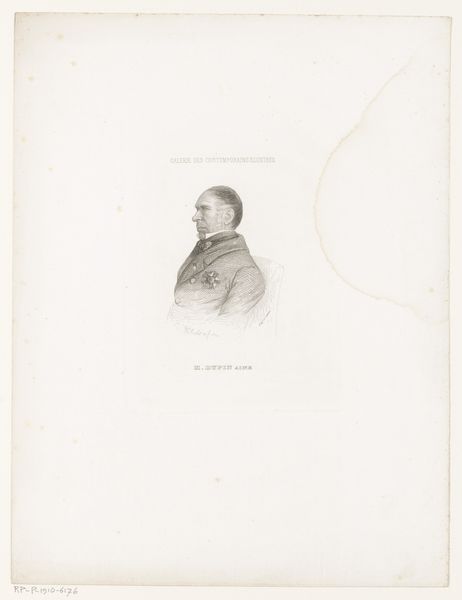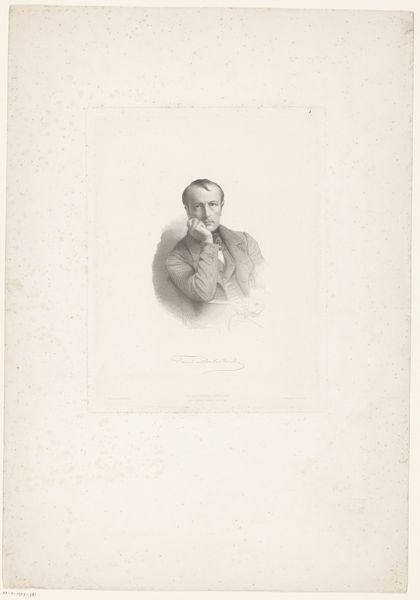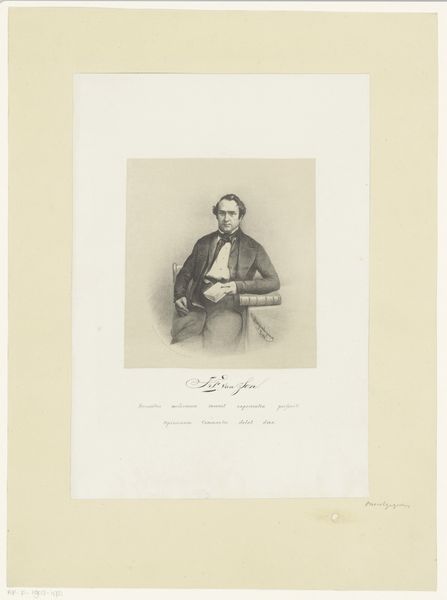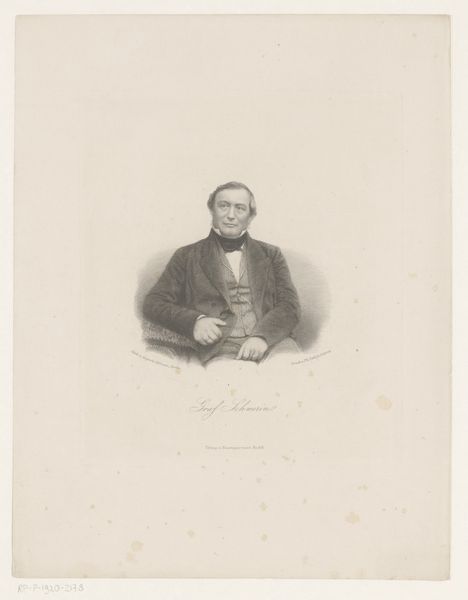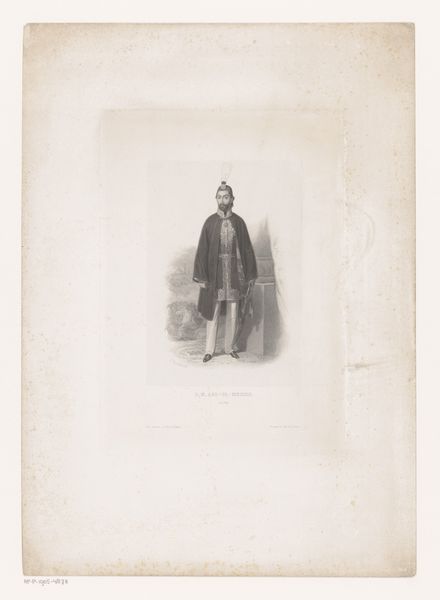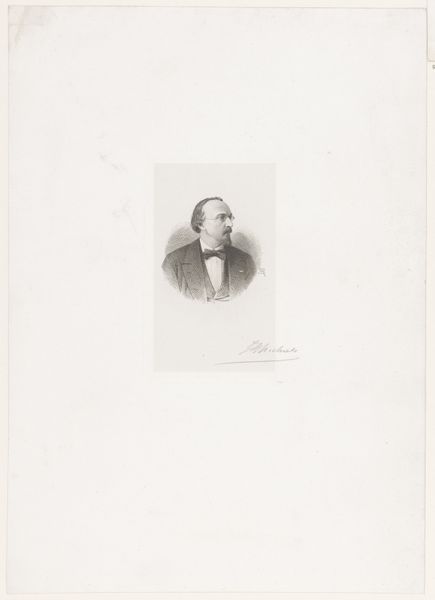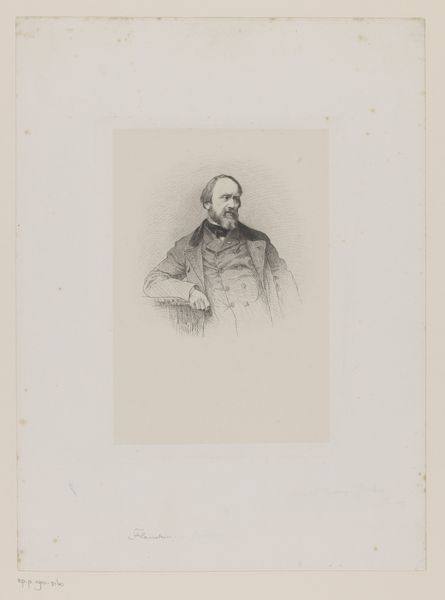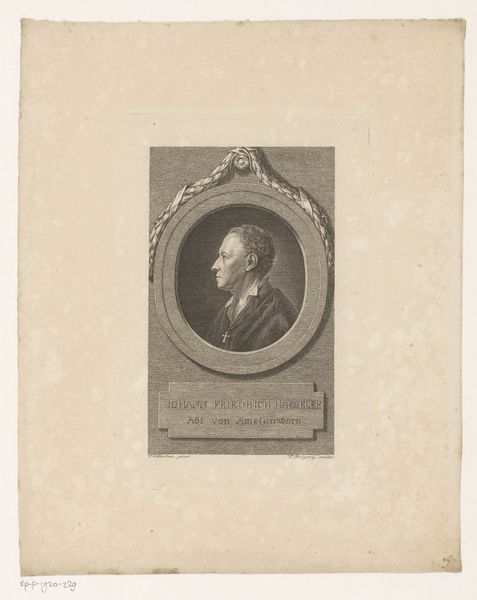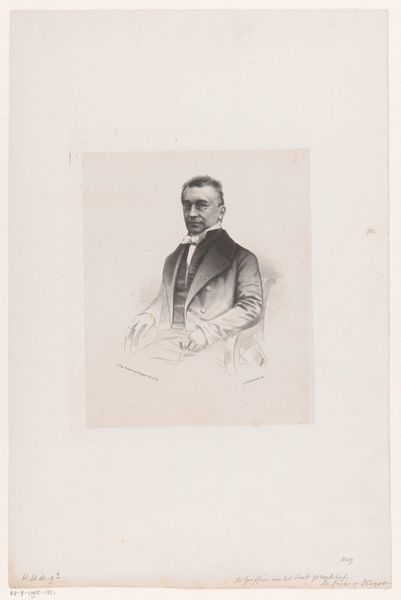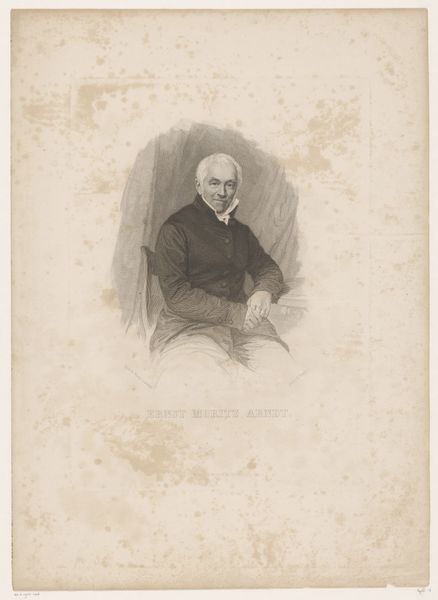
Dimensions: height 189 mm, width 128 mm
Copyright: Rijks Museum: Open Domain
Editor: This is Angilbert Göbel's portrait of Joseph Maria von Radowitz, created sometime between 1831 and 1882, using graphite on paper. There's a real stillness to it. What sort of feeling do you get when you look at this work? Curator: The stillness you perceive speaks volumes. Observe how the subject leans slightly forward, gripping the balustrade. This wasn't simply a physical pose but rather an iconographic language. How does this pose strike you? What memories or concepts does it summon? Editor: He seems to be contemplative. It reminds me of depictions of statesmen...but something more intimate? Curator: Precisely. The artist captures a specific historical consciousness – the weight of governance combined with an individualized portrayal. Notice how his dark clothing contrasts subtly with the light-colored paper and how light falls gently on his face. What could the balance of dark and light here represent? Editor: Maybe the struggle between public duty and private thoughts? There’s something undeniably Romantic about that tension. Curator: Indeed! Romanticism often sought truth in subjective experience, reflecting an introspective cultural moment. The drawing almost functions like a memory – carefully rendered yet fading around the edges. Do you agree, that as a medium, a graphite sketch feels like looking back in time? Editor: Absolutely. It feels less monumental, more personal than, say, an oil painting of a similar subject. I’m starting to see it as more than just a portrait; it’s a cultural artifact encapsulating an era’s anxieties and values. Curator: I think that's wonderfully insightful, particularly with consideration of the piece's romantic era. Thank you.
Comments
No comments
Be the first to comment and join the conversation on the ultimate creative platform.

